Meet the Expert feat. Justina Barrett of the Historical Society of Pennsylvania
200 years of America's history through the eyes of a passionate cultural leader
21st & 18th publishes musings on art, history and fashion across the 18th century through to today. We feature interviews with voices in global fashion and leaders in the arts. Written by Lauren Lynch Wemple (@lolynchwemple). Follow 21st & 18th (@21stand18th) on Instagram.
Meet Justina Barrett & the Historical Society of Pennsylvania
Justina Barrett has been at the Historical Society of Pennsylvania for three years, serving as the Chief Learning and Engagement Officer. Before joining HSP, she had a 25-year career in museums, including 16 years at the Philadelphia Museum of Art where she worked in education, focusing on the American Art collection and managing two historic houses, Mount Pleasant and Cedar Grove, on behalf of the city.
“At Mount Pleasant and Cedar Grove, my job was to coordinate across departments—curatorial, security, conservation, visitor services, marketing—and develop programming. I did a number of big restoration projects and reinterpretations," Barrett explains. "We did programs that wouldn't be allowed in the art museum, like bringing sheep out for a shearing demonstration that was historically accurate.”
Barrett holds a master's degree from the University of Delaware in a program with Winterthur Museum in Early American material culture.
“I have a degree in chairs and teapots. Connoisseurship was a big part of my education...”
To start, what is the difference between a museum and a historical society?
There are historical societies, New York Historical1 and Maryland Center for History and Culture2 come to mind, where the weight is on their museum side. [In short] some organizations such as these have a front-facing venue for displays and exhibitions. In those organizations, the focus is bringing people through the doors and hosting conversations and engagement around objects.
Our energy at the Historical Society of Pennsylvania is really in our reading room. With emphasis on research. We equip research scholars and students - not only tweed jacket wearing scholars. In our 200 years, we’ve always had a broad view of who should be a part of history.
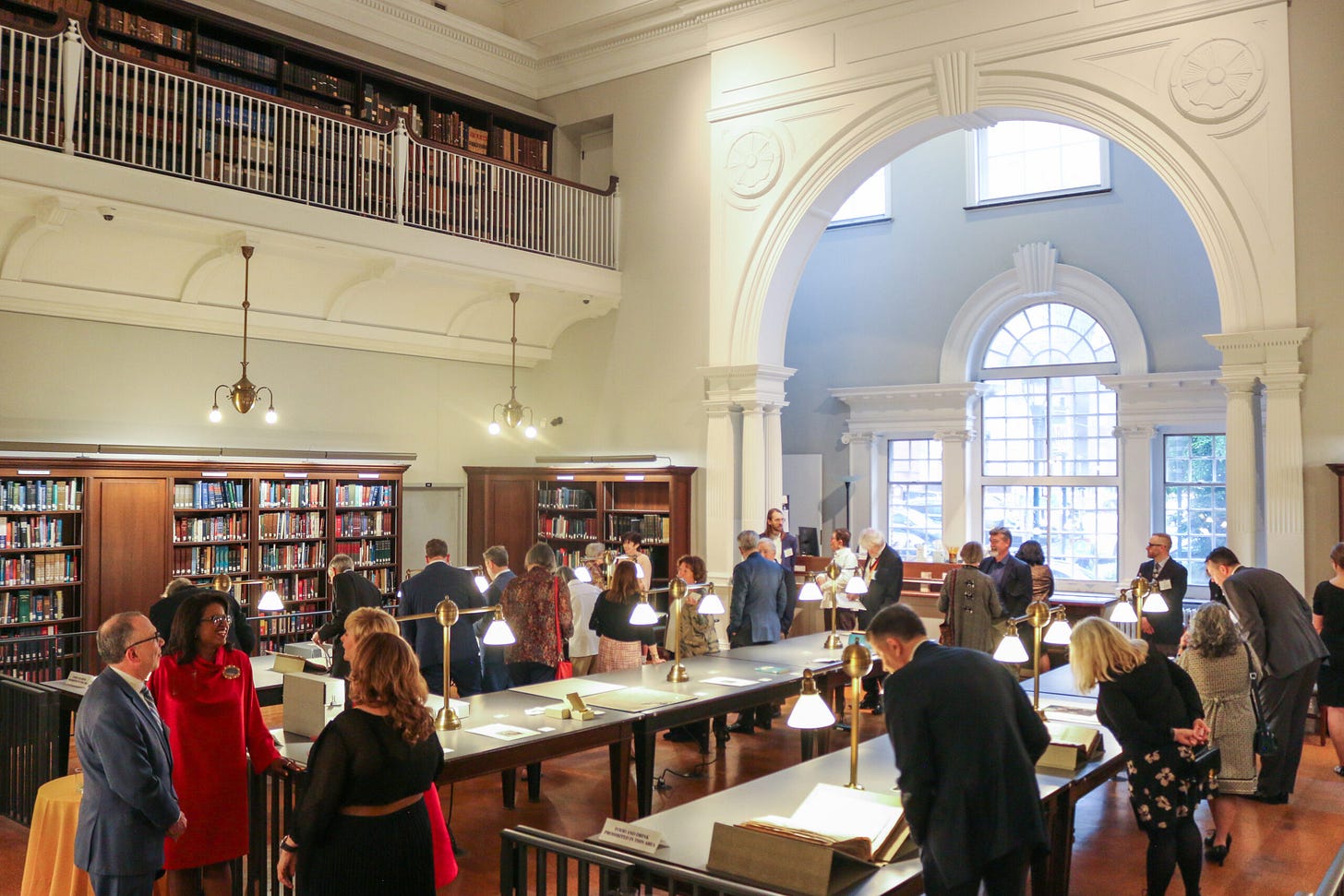
How do people use HSP’s reading room and collections today?
The Society's core function as an archive is to equip people to find their histories. Whether that's personal genealogy—a huge chunk of our audience is here to do genealogy because we have records no other organization has—or to find their neighborhood history. [We also often welcome] journalists, students and professors or artists seeking inspiration.
Set the stage for our Readers: What do HSP’s collections look like? And how many objects in your collection?
22 million paper objects. Books, manuscripts, graphic papers and notes…
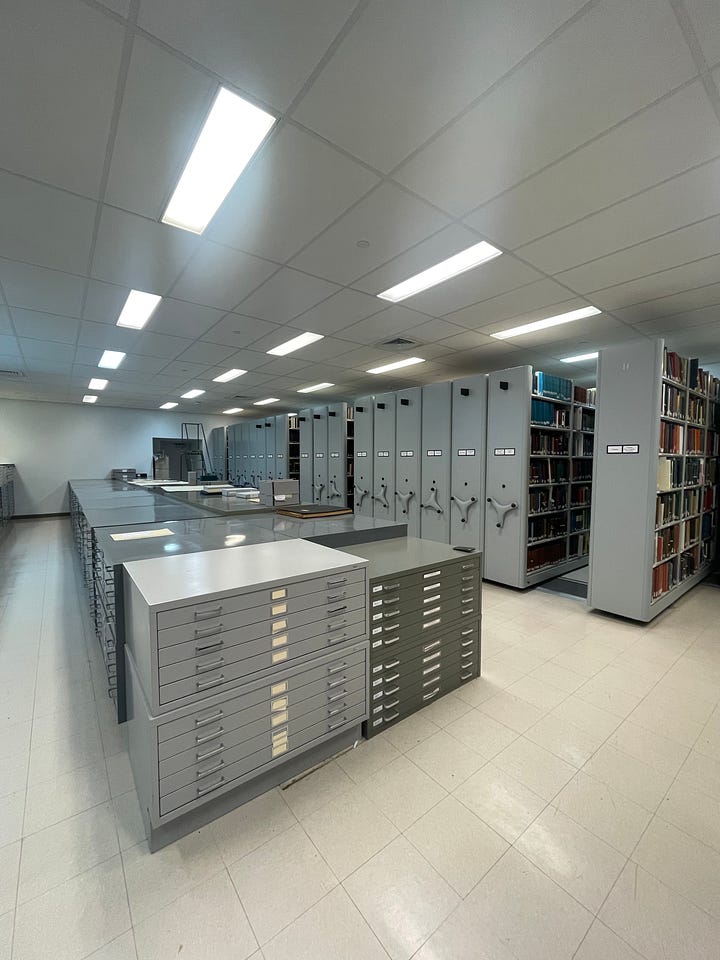
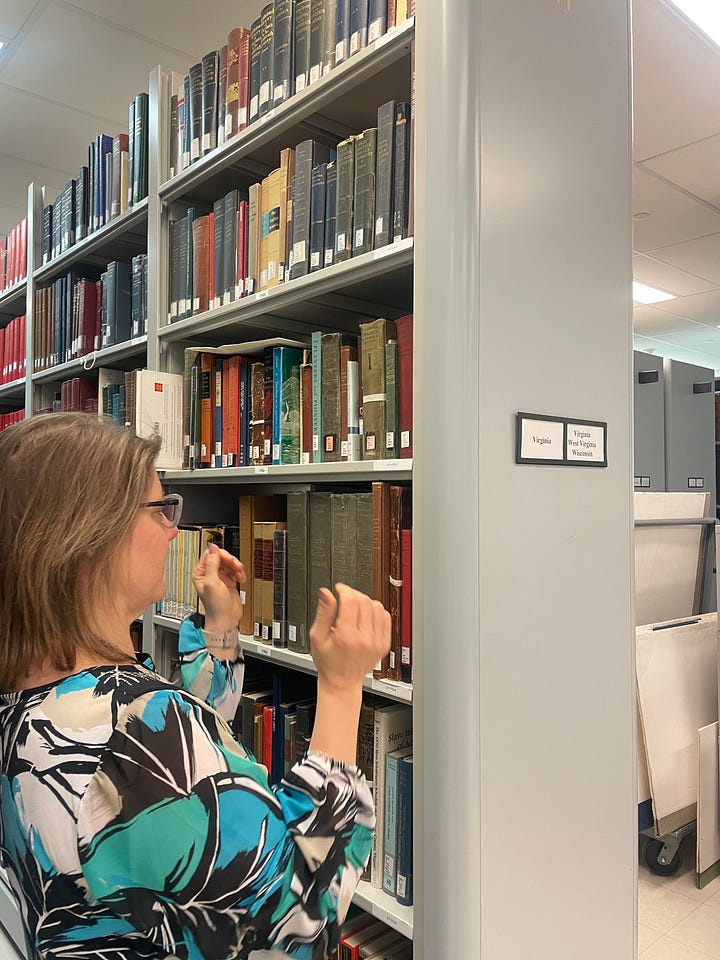
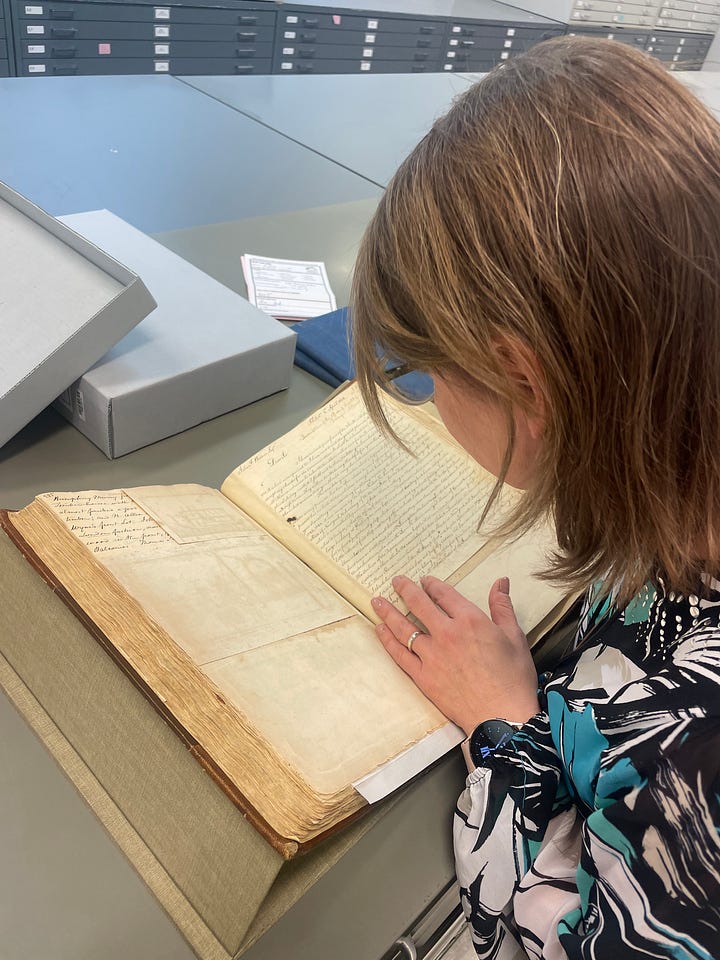
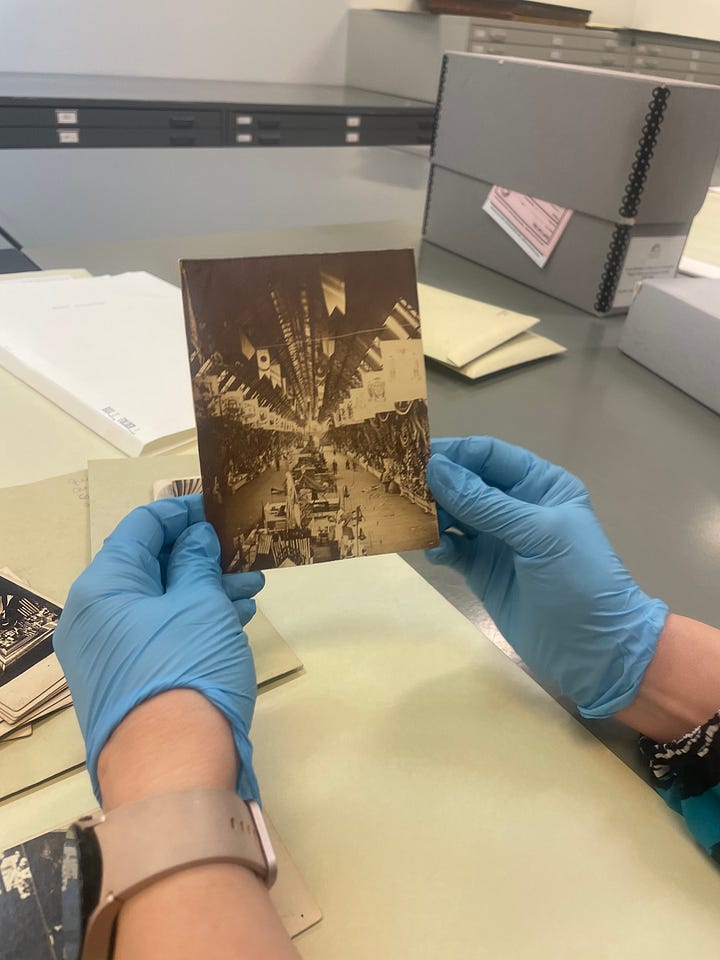
How old is the Historical Society of Pennsylvania? How far back do your collections date?
We’re 200 years old - HSP was founded in 1824.
The strength of our collection is in colonial Pennsylvania, but we do have objects that date back to 15th century Europe. We have a Michelangelo letter somewhere…
How did HSP come to be?
Du Ponceau3 is one of our founders... he was also a member at the American Philosophical Society, which is a learned society, also founded by Ben Franklin4. However DuPonceau wanted to start a historical society here in Philadelphia when Lafayette5 came back for his triumphal tour in 1824.
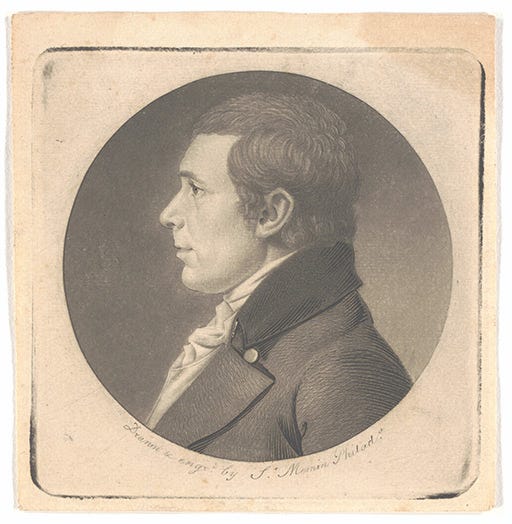
And from then to now, how does your team think about your role in activating Pennsylvania’s ever growing historical and social record?
In a way, we're setting the table in a way. We have to make sure the message [whatever it may be] is out there to be found by the right person. Part of my job is to know that you can find various records here– certainly records of 18th century Philadelphia, but also the history of 20th century Philadelphia and its inhabitants, political records and cartoons or stories of immigration.
And within [those] objects and records are the greater stories. Looking at the object, reading about it in the right way– that’s what we help people to do.
In 200 years, one must collect some unreal objects. What are some of the juicy highlights in HSP’s collection
In the 19th century, autograph collecting became popular. The Gratz6 family was one of them, Ferdinand Dreer7 was another. They wanted one of everything—Marie Antoinette's8 signature is over here.
Take John Fanning Watson's9 manuscript notes from the 1820s…He was collecting stories. These are his notes, and what will eventually go into his book [the Annals of Philadelphia]. We can see him “scrapbooking,” collecting his evidences, his footnotes. Watson recorded information about the Department of Foreign Affairs in the 1780s, noting that important historical figures like James Madison10, Robert Morris11, Alexander Hamilton12, Marquis de Lafayette and Count Rochambeau13 all visited a small three-story brick house where the department was located.
Another highlight: Charles Willson Peale's14 museum accession book. Peale was a painter, a soldier during the Revolutionary War, and then created a museum in Philadelphia. This is his actual list of objects he was collecting: 'Something should never be postponed till tomorrow'—museum words to live by.
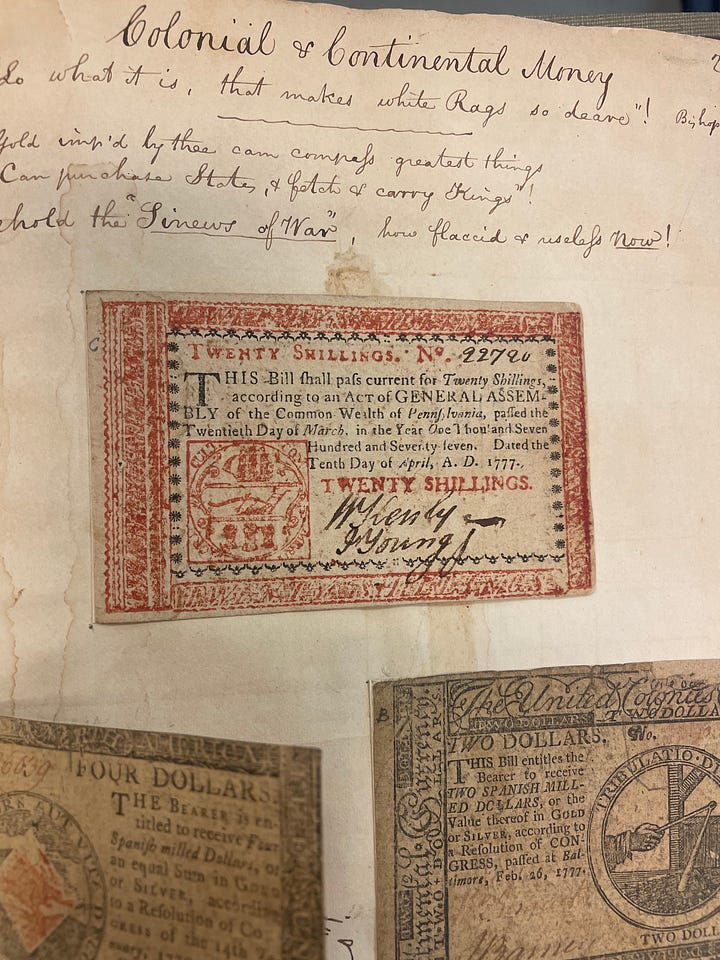
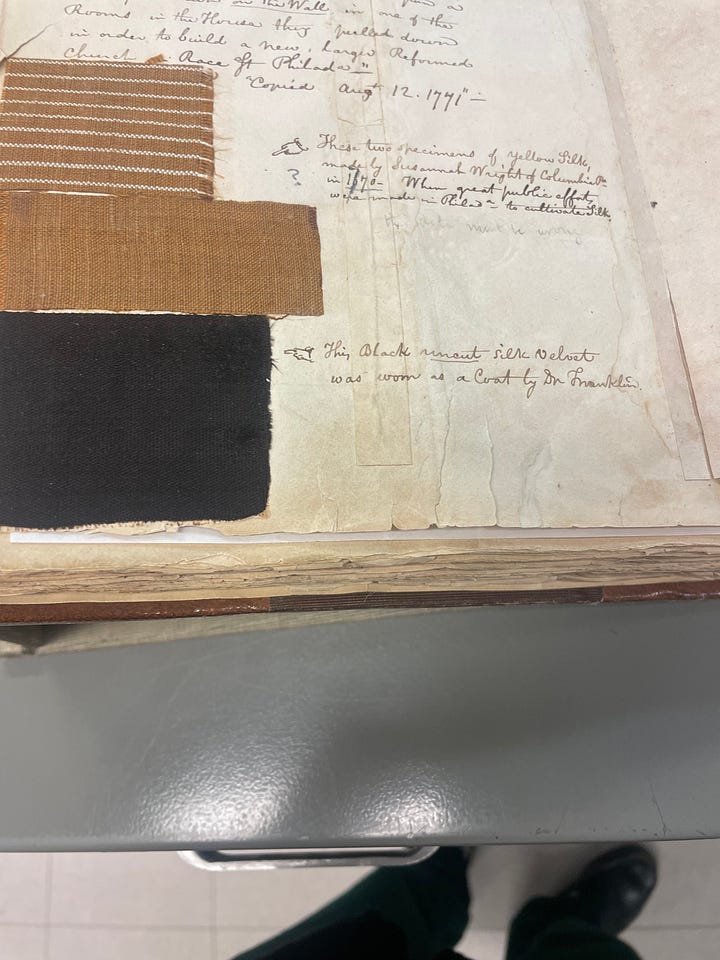
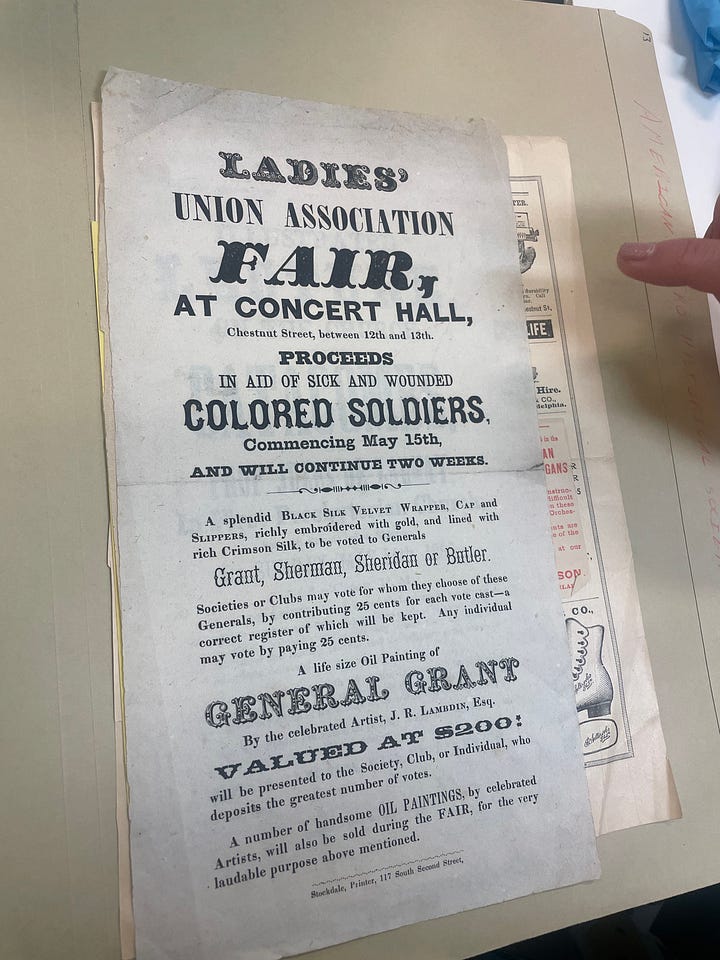
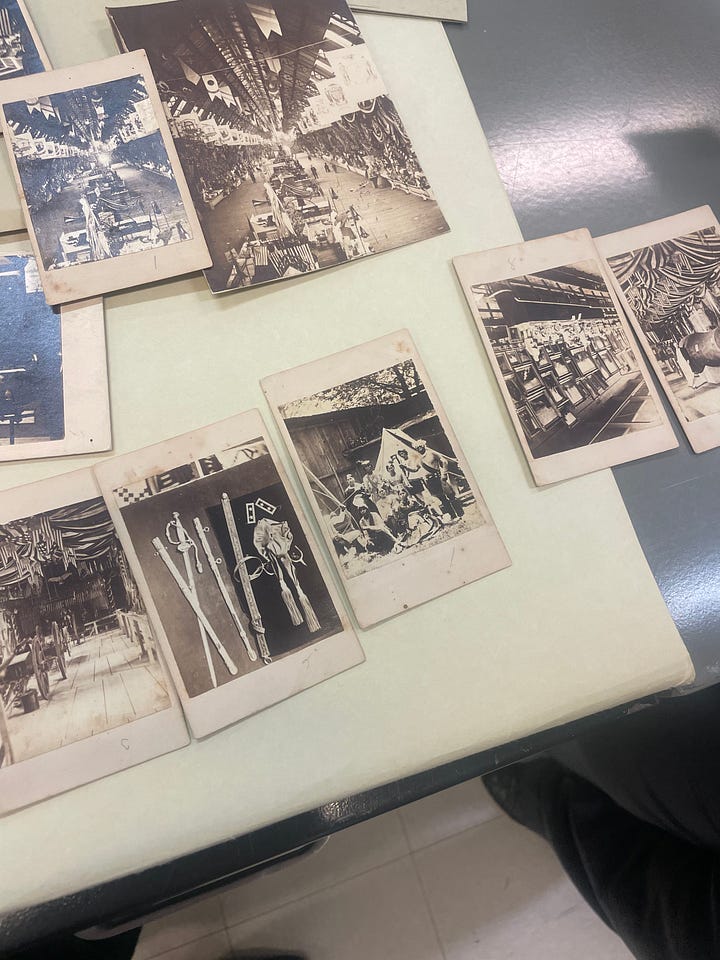
Do you have a favorite piece in the collection? If you had to choose.
It’s hard to choose… I think the best object is William Still's15 journal of the Underground Railroad. It is the handwritten journal, recording person by person: 'arrived this day, so-and-so now known as so-and-so, arrived from such and such a place.’ [The journal also includes a] physical description of each person, whom they left behind, where they were going, where the Vigilant Committee16 is giving them money to go, and sometimes a story of why they left.
The Society is working to tell more inclusive historical stories, including partnering with Philadelphia City Hall to help their volunteer guides present more diverse perspectives on the city's history.
At the beginning, we were collecting history to equip us to be better citizens – it's in our charter. It's not antiquarian or important because Ben Franklin touched it. [We’re collecting history] so we can understand who came before us—this is history with a purpose for the future so we can be better citizens.
Now, for a 21st & 18th classic: What are you currently obsessed with?
Everybody's thinking about 2026 and the celebrations marking America's 250th anniversary.
The Historical Society of Pennsylvania is planning exhibits for 2025 focused on the Pennsylvania Abolition Society, founded in 1775. Right there at the beginning of the Revolution, people were organizing around anti-slavery [and that’s an important part of the story to tell].
I’m also excited about the American Negro Historical Society collection we acquired in the 1930s from Leon Gardiner17. It is a collection that documents the activities of Philadelphia's Black Metropolis.
Justina went on to show us broadside advertisements for fundraising events organized by Black communities to support wounded colored soldiers during the Civil War—parallel to similar events held by white communities. In addition to flyers and advertisements for community events and fundraisers put on by the Women’s Center of Philadelphia in the 1970s.
Learn more about Philadelphia’s Black Metropolis in this engaging video from the HSP.
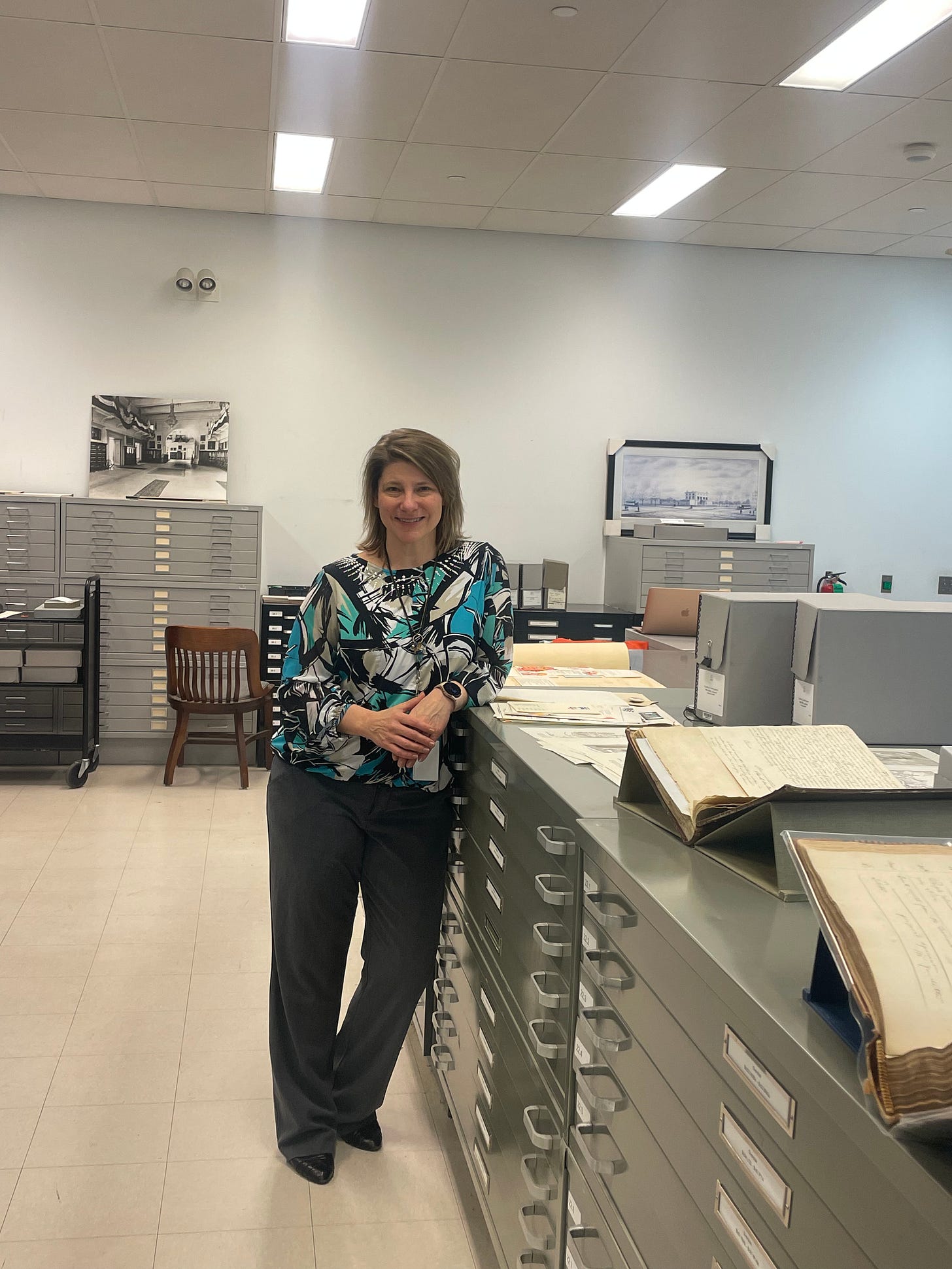
I love studying history. Why? Because it equips me with tools to understand humans and our social tendencies but also because it provides perspective when life becomes overwhelming and we need an example to learn from or find inspiration in.
As we read about, watch and listen to history, don’t forget: these stories and facts are preserved because of hardworking and passionate people, like Justina, and organizations such as the Historical Society of Pennsylvania. People who have worked, as unknowing links, across centuries to weave our human story. Without them how could we care about or learn from the past? How would you know who Alexander Hamilton was? Or why Ben Franklin was a vegetarian who slept with his bedroom window open? And how would you learn about Philadelphia’s Black Metropolis?
We all play a role in the cycle of life and I’m here to celebrate the critical social and cultural role Justina and her colleagues at HSP are actively playing each day. Thank you Justina and HSP — our tricorn hats go off to you.
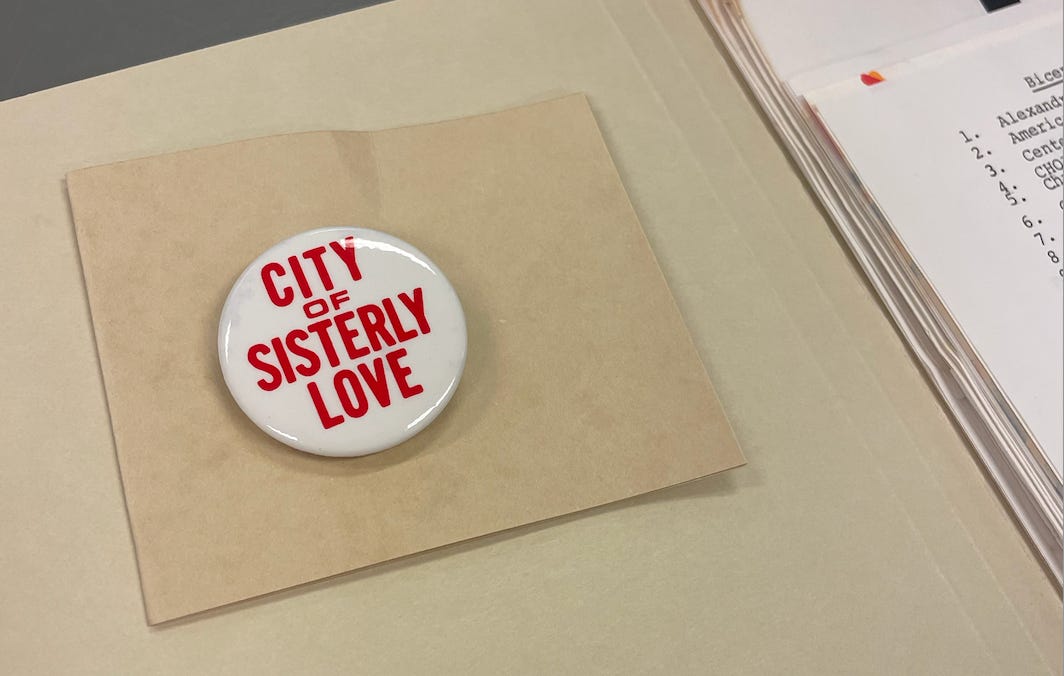
Learn more about New York Historical Society, here (Next time you’re in NYC be sure to plan a visit, their museum is wonderful)
Peter Stephen Du Ponceau (b. 1760 - d. 1844) was a French born American linguist, philosopher and jurist who served in the Revolutionary War and afterward settled in Philadelphia, PA where he became an integral part of Philadelphia’s learned community, particularly those scholars studying the languages of the native peoples in the Northeast USA.
Benjamin Franklin, (b. 1706 - d. 1790) polymath and statesman, was one of America’s founding fathers and a central figure in America’s post-Revolution government formation. Franklin, while born in Boston, lived the majority of his life in Philadelphia and is a beloved figure, integral to Philadelphia’s history and its culture today. (Literally everything seems to be named after him)
Gilbert du Motier, Marquis de Lafayette (b. 1757 - d. 1834) was a French military officer and politician who, quite impressively, willingly joined the American army in their fight for freedom against the British. Fun fact: He named his first child, George Washington de La Fayette.
Michael Gratz and his brother Barnard immigrated to Philadelphia from Silesia, modern day Germany, in 1752. Michael became a successful merchant, setting up future Gratz generations, such as his daughter Rebecca, well known for her work as an educator and philanthropist. The Gratz family played a large role in shaping Philadelphia's Jewish history and community.
Ferdinand Dreer (b. 1812 - d. 1902) was an American jewelry manufacturer, philanthropist and autograph collector (yes, apparently that was a profession in 1800’s America).
Marie Antoinette (b. 1755 - d. 1793) – yes, that Marie Antoinette, Queen of France who met her end at Madame la Guillotine.
John Fanning Watson (b. 1779 - d. 1860) was an American antiquarian and chronicler who became a professional writer and in 1830 he published the Annals of Philadelphia, a collection of memoirs, anecdotes and incidents of the city and its inhabitants.
James Madison (b. 1751 - d. 1836) was an American statesman, diplomat and founding father who served as the 4th President of the United States.
Robert Morris (b. 1734 - d. 1806) was an English born American merchant, investor and found father. Fun fact: Morris founded the first national bank in the United States, the Bank of North America.
Alexander Hamilton (d. 1804) was an American military officer, statesman and founding father who served as Secretary of Treasury to George Washington while in office as President of the United States. He is also the catalyst for hit musicals and a revival of colonial men’s tailoring.
Jean-Baptiste Donatien de Vimeur, Comte de Rochambeau (b. 1725 - d. 1807) was a French army officer who played a critical role in the American’s success during the battle of Yorktown amidst the Revolutionary War.
Charles Willson Peale (b. 1741 - d. 1827) was an American painter, military officer, scientist and naturalist. When he moved from Maryland to Philadelphia in 1775, he set up a painting studio and joined the Sons of Liberty, a secret political organization formed to resist British rule in the American colonies.
William Still (b. 1821 - d. 1902) was a black American abolitionist who served as a conductor on the Underground Railroad in Philadelphia and is said to have helped free at least 649 fugitive American slaves. Sill was also a businessman, writer, historian and civil rights activist.
The Vigilant Committee of Philadelphia provided fugitive slaves moving through the Underground Railroad with shelter, clothing, money and legal assistance.
Leon Gardiner (b. 1892 - d. 1923) was a black American collector and writer who was critical in compiling, researching and recording the story of black Americans in Philadelphia. Gardiner was an interesting character who worked at the US Post Office during the nights and spent his days researching and collecting historical objects and papers on the black American’s experience in the Northeast. Learn more about Gardiner here.




